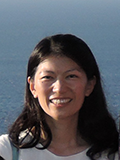Azumi Kuroyanagi

Commendation
Estimation of paleo and future marine environments based on foraminiferal environmental proxies
A list of five major papers
- Kuroyanagi and Kawahata, 2004. Marine Micropaleontology 53, 173-196.
- Kuroyanagi et al., 2009. Marine Micropaleontology 73, 190-195.
- Kuroyanagi et al., 2011. Paleoceanography 26, PA002153.
- Kuroyanagi et al., 2019. Paleoceanography and Paleoclimatology 34, PA003539.
- Kuroyanagi et al., 2020. Marine Micropaleontology, 161, 101924.
Major achievements
Azumi Kuroyanagi has been studying the reconstruction of marine environments using foraminifera. By identifying two morphotypes of planktic foraminifera (Globigerinoides ruber: G. ruber) that live at different depths and combining them with oxygen isotope ratios, she was able to track seawater temperature in the surface and sub-surface layers. This method has been widely used in paleo-temperature reconstructions worldwide. In addition, foraminiferal culturing experiments revealed the survival range of planktic foraminifera in anoxic environments, and showed that the redox state of the ocean during the geological era can be reconstructed from the combination of fossil taxa. She also found that a decrease in pH to 7.7 is the threshold for a decrease in calcification of large benthic foraminifera. She has made important contributions to the prediction of the effects of ocean acidification and anoxic water masses caused by global warming on marine organisms in the near future, as well as the environmental changes in the ocean during the geological era using the ecology of living foraminifera as a clue.
Nominator
Reishi Takashima
